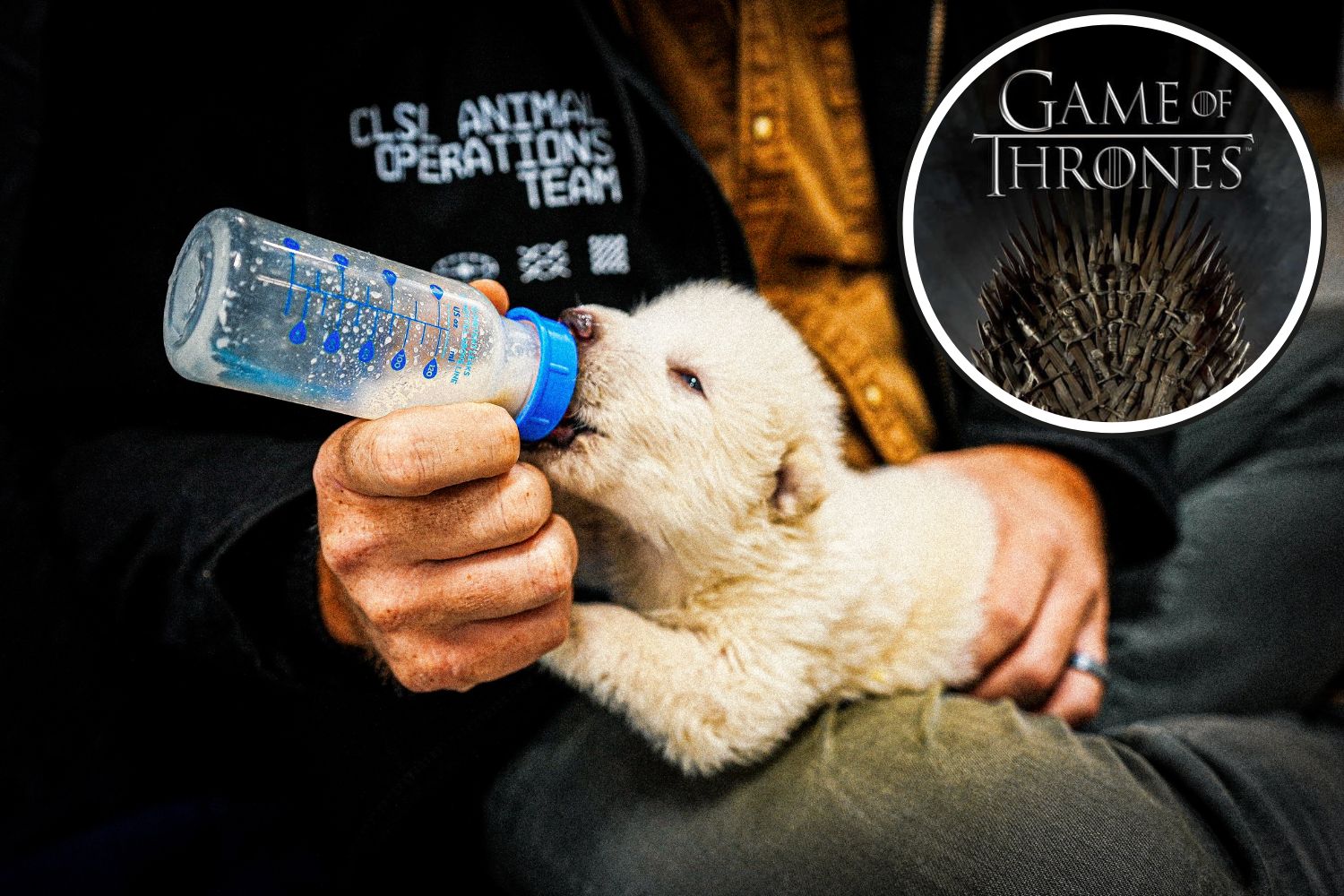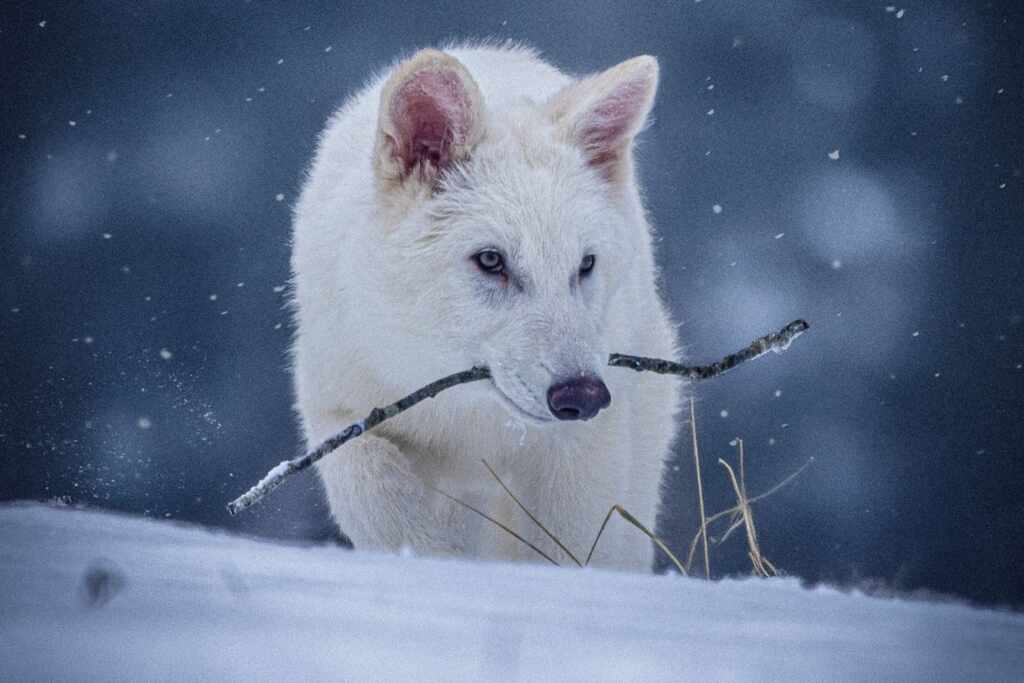An American startup has announced that it has "de-extinct" the otter wolf, an ancient predator that disappeared over 10,000 years ago, thanks to the birth of 3 specimens. In reality, the animals are not clones, but rather genetically modified wolves to resemble their extinct ancestor. The experiment has nevertheless revitalized the scientific, ethical and ecological debate on the possibility - and the meaning - of bringing back lost species

@Colossal Biosciences
Colossal Biosciences has chosen legendary names for three pups that seem straight out of a fantasy story. In fact, there is more storytelling than prehistory in the announcement by the American biotechnology and genetic engineering company, which revealed its “metalupi”—genetically modified wolves designed to resemble the Aenocyon dirus. This canid species once roamed the Americas between the late Pleistocene and the early Holocene, surviving up until 10,000 years ago, and gained fame thanks to the fantasy drama Game of Thrones.
The news, picked up by outlets like The New Yorker and Time, exploded with sensational headlines: “De-extinction is here,” they said, wrote, and read. But the reality is more nuanced. The three wolves—two six-month-old males and a two-month-old female—are not replicas of Aenocyon dirus, but rather modern gray wolves that underwent a complex genetic intervention modifying 20 key genes. Of these, 15 were successfully inserted, while the remaining five were excluded to avoid the risk of deformities.
The Result? The animals are 20% larger than gray wolves of the same age, with thick, light-colored coats, bushy tails, and an imposing stature. However, they remain modern wolves, not perfect replicas of the prehistoric predator.
Science meets spectacle
Founded in 2021, Colossal has one clear goal: to bring extinct animals back to life. It has already attempted this with woolly mammoths, thylacines, and dodos, though the results are still experimental. The metalupi, to date, are the most concrete project. “We’ve created functional copies of something that was once alive,” said Beth Shapiro, the company’s chief scientific officer, in an interview with The New York Times. A powerful statement, albeit somewhat ambiguous.
The choice to focus on the Aenocyon dirus is not by chance: compared to other extinct animals, canids are more genetically accessible. DNA recovered from two fossils—one a 13,000-year-old tooth, the other a 72,000-year-old skull—provided the foundation for genetic engineering. Thanks to their relation to wolves, dogs, and coyotes, Colossal was able to utilize existing techniques such as dog cloning and implantation in surrogate mothers.
A controversial “rebirth”
The three pups live in captivity at a secret reserve in North America, far from prying eyes and potential risks of mating with wild wolves. One of the four born pups died shortly after birth for reasons unrelated to genetic manipulation. But the remaining three are healthy, well-cared for, and constantly monitored.

@Colossal Biosciences
Despite this, many scientists remain skeptical. Talking about “de-extinction,” they clarify, is misleading: hundreds, if not thousands, of distinctive genes of the Aenocyon dirus are still missing. And while their outward appearance may resemble that of the prehistoric wolf, their behavior, metabolism, and many biological functions are still those of a modern gray wolf.
Geneticist Julie Meachen, who contributed to the study of the metalupi’s DNA, emphasizes that Aenocyon dirus and gray wolves are 99% genetically similar, but the 80 different genes pertain to key traits: size, jaw strength, and fur density. Only a portion of these mutations has been replicated by Colossal.
Dream or risk?
Behind the fascination for the “resurrection” of extinct animals lies a broader issue. Colossal’s project is not just science: it’s also marketing, investment, and storytelling. With a valuation of $10 billion, the startup is riding the allure of the distant past to push technology that—if perfected—could have applications in conservation.
Indeed, Colossal claims that these techniques could help endangered species, such as the red wolf. The company has already created clones from hybrids between red wolves and coyotes, attempting to increase genetic variability and save the species. But not everyone is convinced it’s the right path: introducing new animals could upset delicate ecological balances or create unforeseen problems.
Others question the use of resources: is it worth spending billions to “resurrect” extinct species when hundreds of others are at risk of extinction today? Wouldn’t it be better to invest in prevention and the protection of ecosystems and the living beings that inhabit them?
According to the International Union for Conservation of Nature (IUCN), at least 160 species have gone extinct in the last century. And if we look to the past two centuries, we realize that we’ve lost forever animals like the golden toad, the Pinta Island tortoise, and the Pyrenean ibex. But also the northern white rhinoceros, the Javan tiger, and the lipote. Or, more recently, the chiurlottello.
The future is (almost) prehistoric
The metalupo project raises more questions than answers. Is it truly right to manipulate life to satisfy our scientific curiosity or our desire for environmental redemption? And what will happen when—not if—technology is capable of bringing back mammoths, dodos, or other iconic animals?
For now, Romulus, Remus, and Khaleesi, likely destined to remain lifelong test subjects, remain a pioneering experiment. They are not wolves from the past but ambassadors of a future where the line between the natural and artificial becomes ever thinner. A future where genetics promises miracles, but also demands profound ethical choices.
